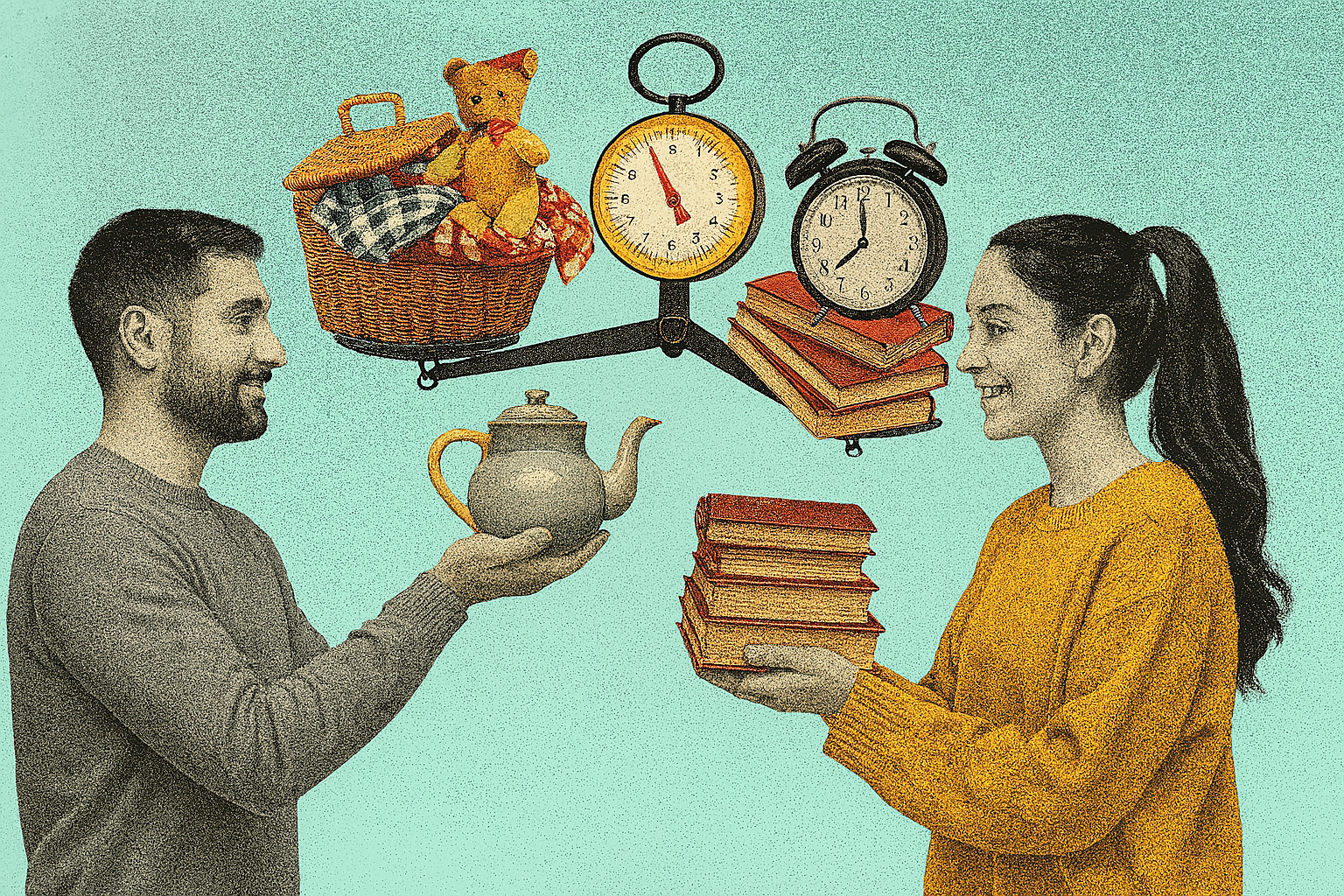Could Barter Apps Like Zèya Replace Fast Fashion?
Introduction: Reclaiming an Old Practice for a Modern Problem
Fast fashion is responsible for about 10% of global carbon emissions and enormous water waste, producing far more clothing than humanity needs. In fact, it’s estimated that we already have enough garments to clothe the next six generations. Bartering, the very first system of trade and commerce, is reemerging as a sustainable antidote. Platforms like Zèya help people swap not just clothing but toys, books, appliances, and other everyday goods, extending their lifespans and reducing overconsumption.
The Sustainability Case for Bartering
Bartering is inherently circular. Each swap keeps products, materials, and resources in circulation longer, reducing the demand for manufacturing new goods and the extractive practices that fuel it. When you barter, you’re not just finding a new owner for something you no longer need, you’re actively preventing emissions, water use, and waste associated with producing, packaging, and transporting new items.
Unlike resale platforms, which often prioritize profit and can come with fees or inflated pricing, bartering focuses on mutual benefit and accessibility. This makes it easier for people of all income levels to participate in a reuse economy. It also helps build community connections, fostering a culture of sharing rather than consumption. In many ways, bartering is one of the most equitable and environmentally sound ways to meet your needs, reducing waste, conserving resources, and lowering your carbon footprint without requiring additional spending.
Why It Works
Reduces Overproduction: Less demand for new goods.
Cuts Waste: Fewer items sent to the landfill.
Curbs Overconsumption: By slowing impulse buying and promoting intentional exchanges.
Builds Community: Encourages sharing over ownership.
Accessible: No cash needed.
From Closets to Kitchens: Expanding the Barter Revolution
Fast fashion is just one symptom of our broader throwaway culture. Every year, millions of perfectly usable products—baby gear, small appliances, electronics, toys—end up in landfills simply because they’re no longer “new.” This cycle of constant replacement drains resources and generates staggering amounts of waste.
Barter platforms like Zèya offer a simple, scalable solution. By making it easy to trade everything from a stroller to a blender, these platforms empower people to keep products circulating longer, reducing the demand for resource-intensive manufacturing and all the emissions that come with it.
When you start swapping beyond clothes, you quickly realize how much potential is sitting unused in our homes. That old food processor in your cabinet or the stack of outgrown kids’ shoes could be exactly what someone else needs. And when you fulfill your own needs through barter, you avoid supporting industries that rely on virgin materials and energy-heavy production.
Ultimately, this shift isn’t just about waste reduction. It’s about adopting a mindset that values durability, sharing, and sufficiency over endless consumption. It’s about seeing every object—no matter how humble—as part of a larger system that deserves respect and care.
Overcoming Barriers
Though bartering has challenges, like convenience, scale, and perceived value, digital tools are removing friction. Zèya’s localized networks, verified users, and smart matching make swapping easier and safer. The platform’s wishlists, in-app messaging, and reputation scores help users find perfect trades without the uncertainty that can plague peer-to-peer exchanges.
The Ripple Effect: How Barter Changes Habits
Swapping isn’t just about reducing waste. It challenges the mindset that products are disposable and easily replaceable. When you take the time to trade an item instead of tossing it, you recognize that it still has value, both to you and to someone else. You start to see your belongings not as clutter to discard but as resources with life left in them.
This simple act of bartering can transform how we think about consumption. It prompts us to ask: Do I really need something new? Could I find what I need within my community? Over time, these small decisions can ripple outward, inspiring more mindful purchasing, more care for the things we own, and deeper commitments to living sustainably.
Bartering also creates a sense of shared responsibility. When you exchange goods face to face or through a trusted network, you build relationships and strengthen community ties. You’re reminded that sustainability isn’t just an individual choice—it’s a collective effort that starts with valuing what we already have.
Getting Started with Barter
If you’re new to swapping, start small. Audit your home for items you no longer use. Create a profile on Zèya, upload clear photos, and write honest descriptions. Focus on local trades to avoid shipping emissions. Over time, you’ll build a trusted network of fellow swappers.
Conclusion: A Culture Shift Worth Trying
Barter alone won’t solve overconsumption, but it’s a powerful step toward a low-waste future. Reframing “used” as valuable and connecting through exchange is a radical cultural shift.
Ready to explore bartering? Download the Zèya app today and join the barter economy. Swap, share, and build a more sustainable world.
Ready to begin your waste-free journey?
Subscribe to our newsletter for more sustainable living tips, or download our eBook to learn how to reduce your waste and live with intention.
Waste Free Home
Want to create a more sustainable home but not sure where to start?
Our Waste Free Home downloadable workbook is your step-by-step guide to reducing waste and living more intentionally.


